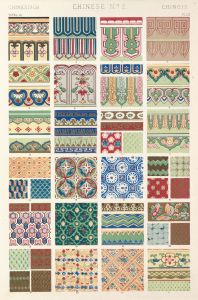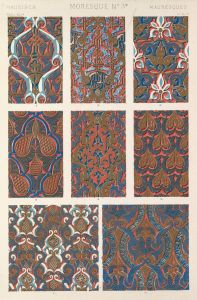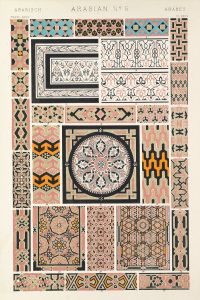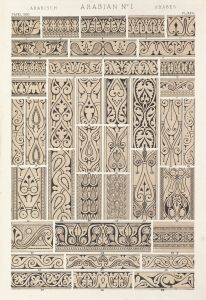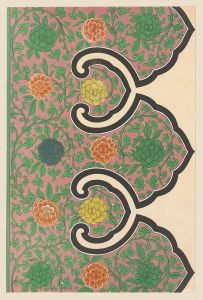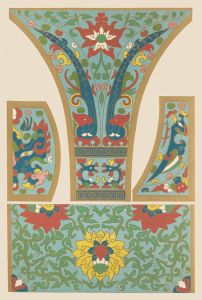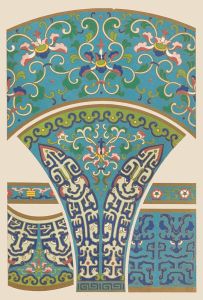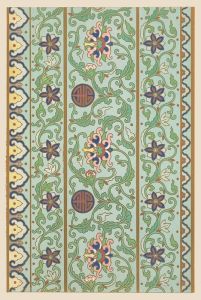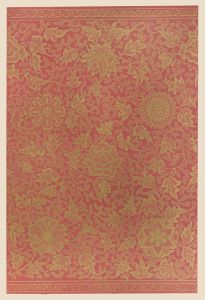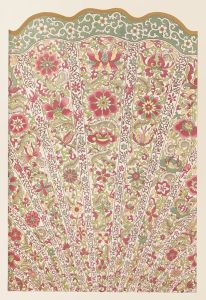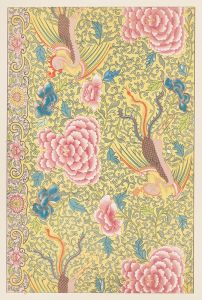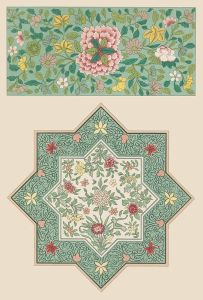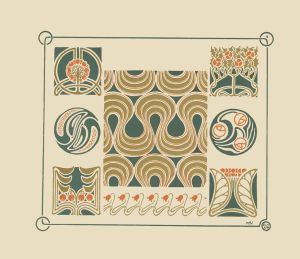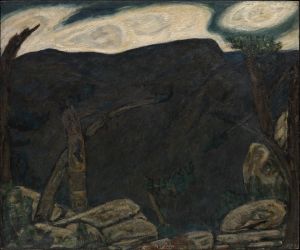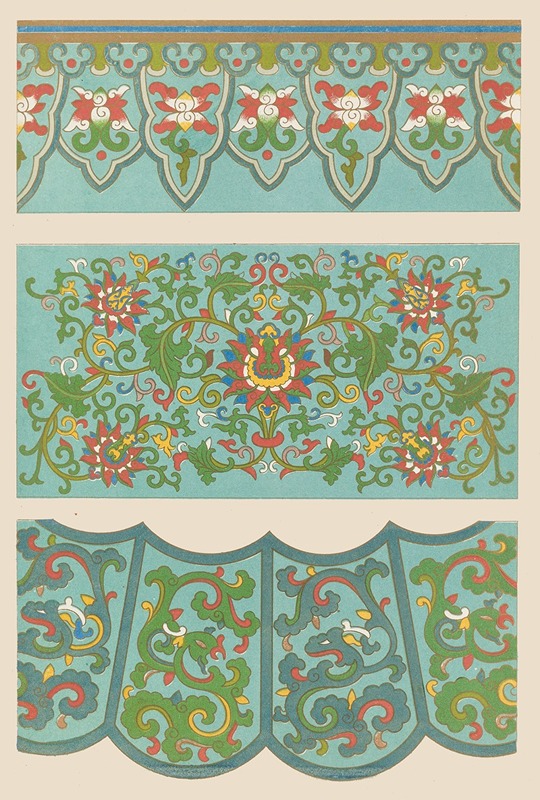
Examples of Chinese ornament, Pl.58
A hand-painted replica of Owen Jones’s masterpiece Examples of Chinese ornament, Pl.58, meticulously crafted by professional artists to capture the true essence of the original. Each piece is created with museum-quality canvas and rare mineral pigments, carefully painted by experienced artists with delicate brushstrokes and rich, layered colors to perfectly recreate the texture of the original artwork. Unlike machine-printed reproductions, this hand-painted version brings the painting to life, infused with the artist’s emotions and skill in every stroke. Whether for personal collection or home decoration, it instantly elevates the artistic atmosphere of any space.
"Examples of Chinese Ornament, Pl.58" is a plate from the influential design book The Grammar of Ornament by Owen Jones, first published in 1856. Owen Jones (1809–1874) was a British architect and designer known for his contributions to the study and application of decorative arts. His book aimed to document and categorize ornamental designs from various cultures around the world, providing a comprehensive resource for artists, designers, and architects.
Plate 58 specifically focuses on Chinese ornamentation, showcasing patterns and motifs inspired by traditional Chinese art and design. The illustrations in this plate are characterized by their intricate geometric patterns, floral motifs, and vibrant use of color, which were hallmarks of Chinese decorative arts. These designs reflect the aesthetic principles of symmetry, balance, and harmony that are often associated with Chinese art. The plate serves as an example of how Jones sought to highlight the richness and diversity of global decorative traditions.
Jones's work was groundbreaking in its time, as it emphasized the importance of studying and respecting the artistic traditions of different cultures. By including Chinese ornamentation in The Grammar of Ornament, Jones acknowledged the sophistication and influence of Chinese design on the broader history of art and decoration. His approach was rooted in the belief that understanding the principles of ornamentation from various cultures could inspire new creative expressions in contemporary design.
The illustrations in Plate 58 were not direct reproductions of specific Chinese artworks but were instead stylized interpretations based on Jones's study of Chinese decorative elements. These designs were likely influenced by artifacts, textiles, ceramics, and architectural details that Jones encountered through his research and the growing availability of Chinese art in Europe during the 19th century. The plate exemplifies Jones's method of distilling the essence of a cultural style into a format that could be studied and adapted by Western designers.
The Grammar of Ornament remains a significant reference in the history of design, and Plate 58 is a testament to the enduring appeal and influence of Chinese ornamentation. The book continues to be appreciated for its detailed illustrations and its role in promoting cross-cultural appreciation of artistic traditions.





